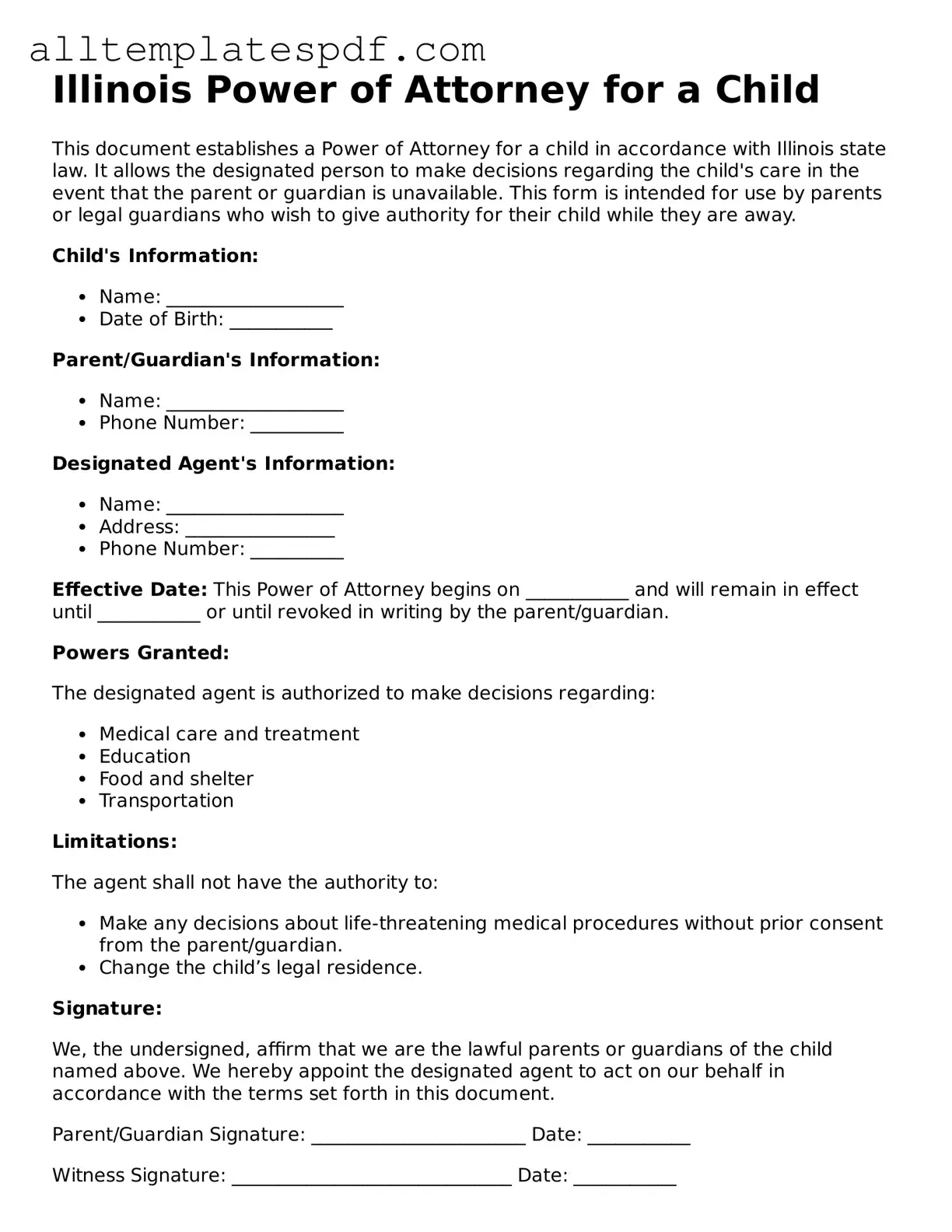Filling out the Illinois Power of Attorney for a Child form is a crucial task that requires attention to detail. One common mistake is failing to provide complete information about the child. It is essential to include the child’s full name, date of birth, and any other identifying information. Omitting this data can lead to confusion or delays in the future.
Another frequent error is not specifying the duration of the power of attorney. The form allows individuals to set a specific time frame for the authority granted. If this section is left blank, it may lead to unintended consequences, such as the power extending longer than intended or expiring too soon.
People often neglect to sign and date the form properly. All parties involved must provide their signatures, and the date of signing is critical. Without these, the document may be considered invalid, which could create legal complications down the line.
In some cases, individuals do not understand the importance of having witnesses. The Illinois Power of Attorney for a Child form requires the signatures of at least two witnesses. Failing to include witnesses can render the document unenforceable, so it is vital to ensure this step is completed.
Another mistake is not reviewing the form thoroughly after completion. Errors in spelling, dates, or names can lead to misunderstandings. Taking the time to review the entire document can help catch these mistakes before submission.
Individuals sometimes overlook the need for notarization. While not always required, having the document notarized can add an extra layer of validity and protection. It is advisable to check the specific requirements to ensure compliance.
Additionally, people may not fully understand the powers they are granting. It is important to clearly outline what decisions the agent can make on behalf of the child. Vague language can lead to disputes or misunderstandings regarding the agent's authority.
Lastly, individuals often forget to keep a copy of the completed form. After filling it out, retaining a copy is essential for reference and to provide to the agent. This ensures that all parties have access to the same information and can act accordingly.
